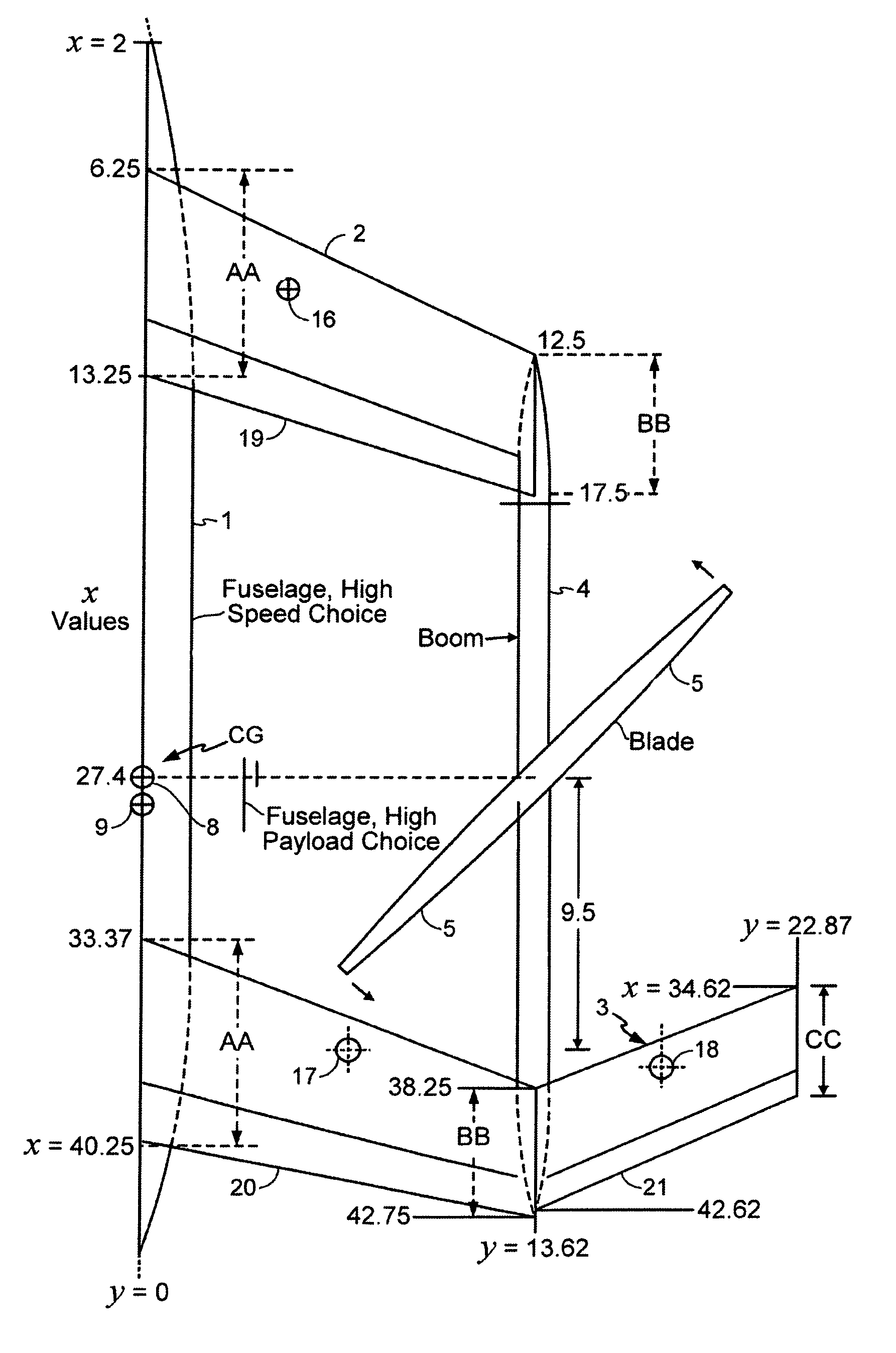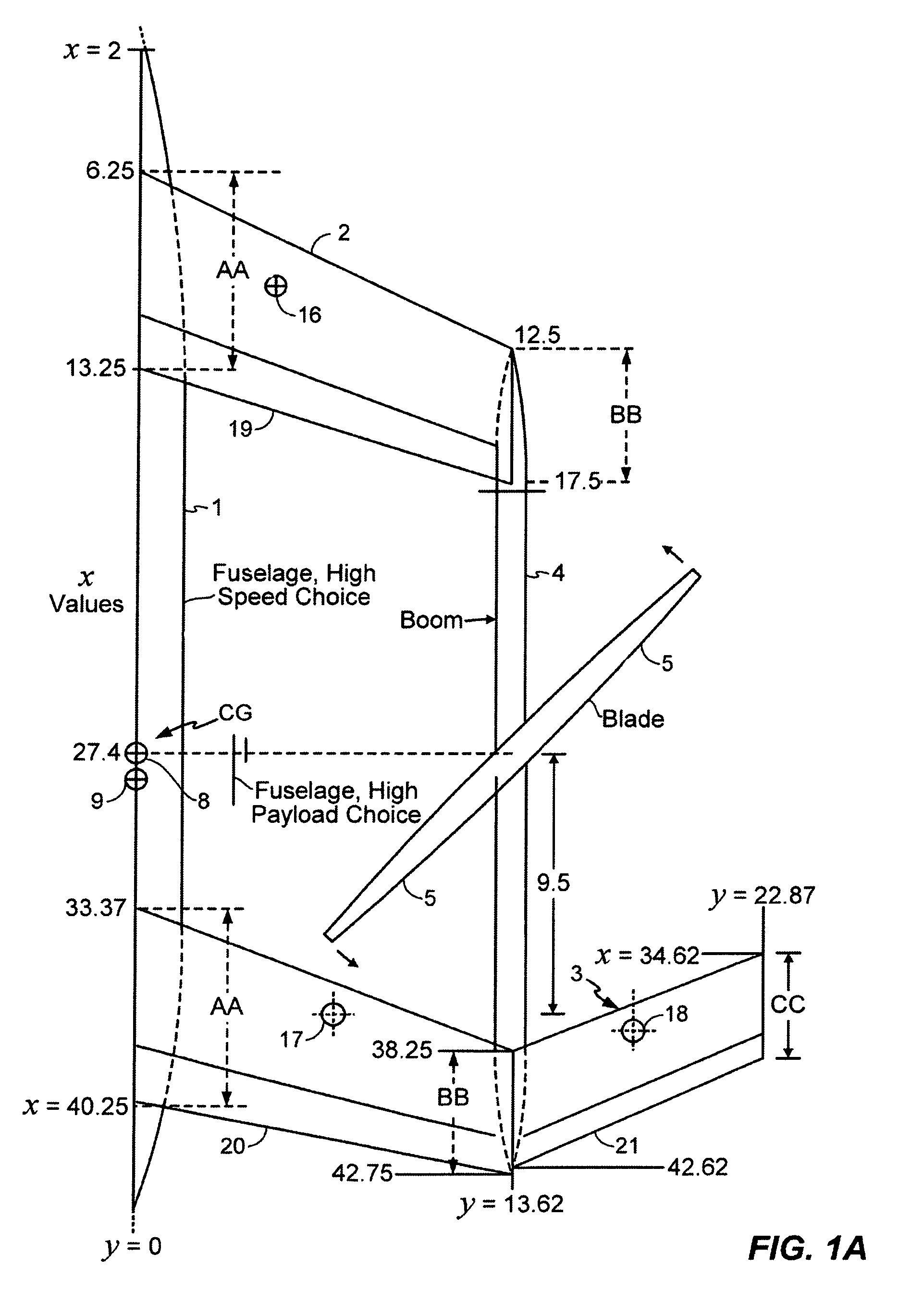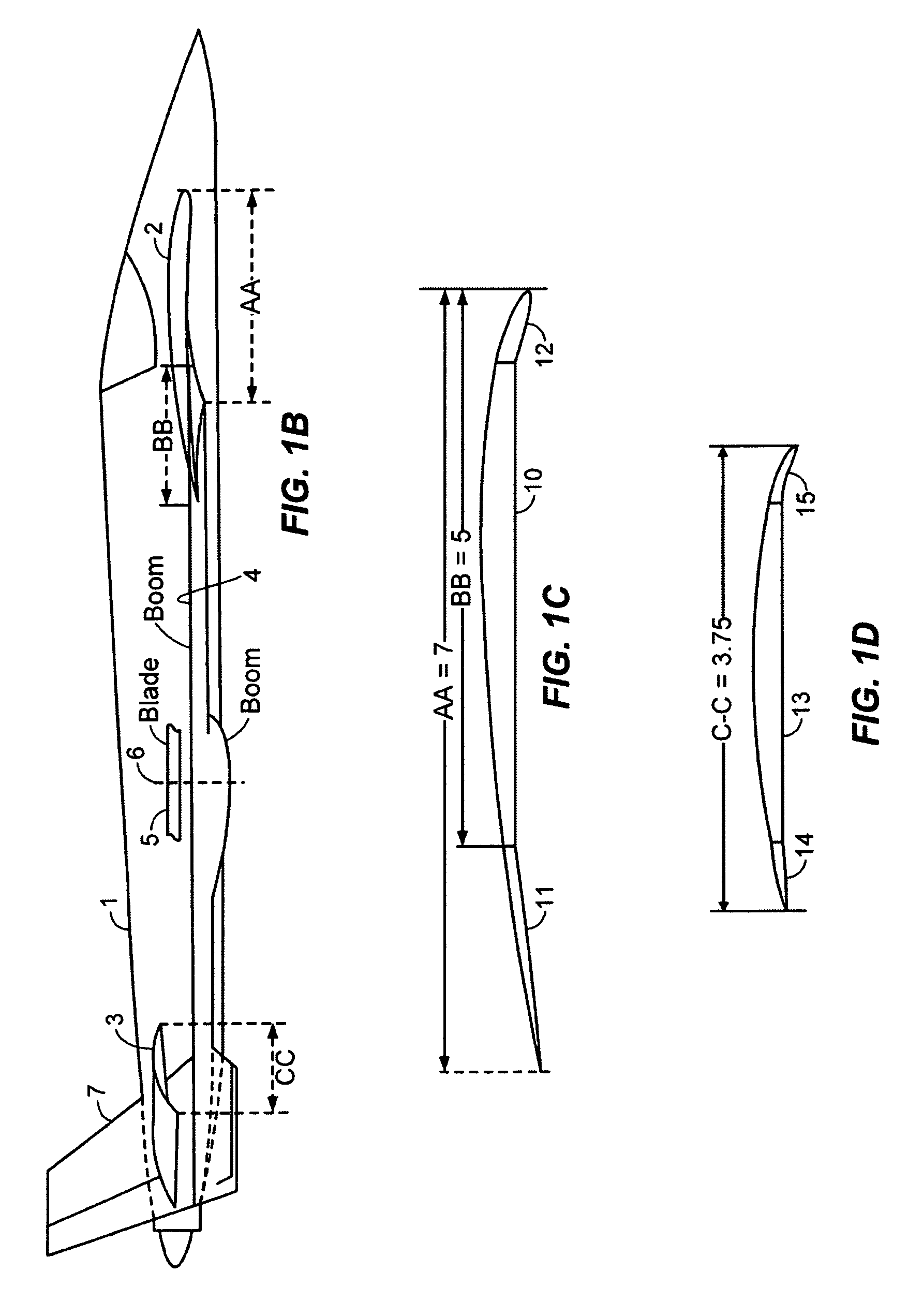Aircraft with dual flight regimes
a dual-flight, aircraft technology, applied in the direction of liquid fuel engines, marine propulsion, vessel construction, etc., can solve the problems of high fuel consumption, limited vertical flight time, short range, etc., and achieve the effect of reducing aircraft drag and eliminating asymmetric forces
- Summary
- Abstract
- Description
- Claims
- Application Information
AI Technical Summary
Benefits of technology
Problems solved by technology
Method used
Image
Examples
first embodiment
[0021]FIG. 1a shows in top view the right half of my VTOL aircraft, hereafter referred to as VTOL-1, using swept wings. Specifically fuselage 1 supports a front swept-back wing 2 of small span and a rear wing with large span 3 using a W planform. A long right boom 4 extends between the tip of wing 2 and at the change of sweep of wing 3. Boom 4 supports a two bladed rotor 5 that can turn counter clockwise as shown, or clockwise. Fuselage 1 can carry a jet engine, and rotor 5 can be driven by an electric motor installed in the boom, or by an engine which can be cross-shafted to a left engine on a left boom.
[0022]In high speed flight regime, rotor blades 5 are aligned and adjacent to boom 4 for minimum drag. The blades can also be housed inside doors on the booms, as will be shown later on. The swept wings allow the craft to reach speeds of up to approximately MACH 0.85. In slow or vertical flight regime, rotor 5 and its opponents left rotor (not shown) rotate in opposite directions to...
second embodiment
[0044]FIG. 2 shows the invention referred to hereafter as VTOL-2. It is intended to augment rotor lift in vertical flight by surrounding a large portion of the perimeter of its rotors with portion of the wing and fuselage surfaces, such that the reduced pressures (lower than atmospheric) on top of the rotor's plane extends over the adjacent surfaces of the craft, as well as reducing tip losses at the tip of the blades in a large portion of its circumference.
[0045]Specifically, FIG. 2 shows a central fuselage 25, front wing 26 swept forward, and swept back wing 27. In planform the shapes of the central portion of fuselage and the adjacent trailing portion of front of wing 26 combines to form a portion of a ring 28, surrounding part of the circumference of rotor 32. The central portion of fuselage 1 and the root of the leading edge of rear wing 27 combine to form another portion of a ring 29, surrounding part of the circumference of the rotor's circle. When combined, portions 28 and 2...
fourth embodiment
[0047]FIG. 4 shows the invention, described as VTOL-4, the main feature of which is the elimination of the central fuselage shown in FIG. 1. Specifically, the type of swept back wing 38 are joined to portions of wing 39 by left boom 40 and right boom 41. The booms extend from the tip of wing 38 to the portion of wing 39 at which sweepback is reversed to form a W-planform. Two rotors are mounted on the booms shown with their peripheral paths 42 and 43.
[0048]FIG. 5 shows my twin rotor configuration in an embodiment referred to as VTOL-5. It exemplifies firstly a pure helicopter configuration comprising central fuselage 48 with lateral wings or beams 49 and 50 supporting at their tips rotors having tip path 51 for the right rotor and 52 for the left rotor. This configuration offers practical advantages, such as avoiding the need of a tail rotor, or allowing the use of rigid fixed pitch rotor blades, as will be discussed later on. In a variant of FIG. 5 each rotor is asymmetric and has ...
PUM
 Login to View More
Login to View More Abstract
Description
Claims
Application Information
 Login to View More
Login to View More - R&D
- Intellectual Property
- Life Sciences
- Materials
- Tech Scout
- Unparalleled Data Quality
- Higher Quality Content
- 60% Fewer Hallucinations
Browse by: Latest US Patents, China's latest patents, Technical Efficacy Thesaurus, Application Domain, Technology Topic, Popular Technical Reports.
© 2025 PatSnap. All rights reserved.Legal|Privacy policy|Modern Slavery Act Transparency Statement|Sitemap|About US| Contact US: help@patsnap.com



